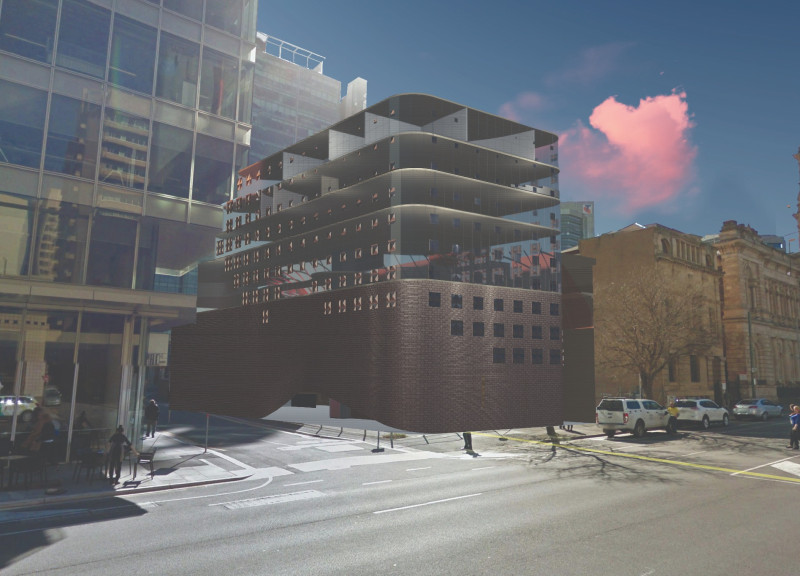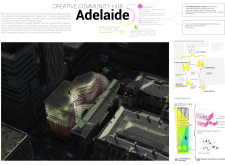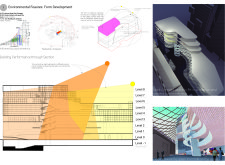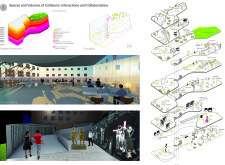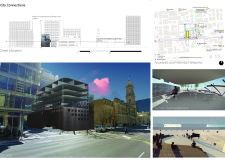5 key facts about this project
### Project Overview
Situated in Adelaide, the Creative Community Hub is designed to serve as a multifunctional gathering space that promotes creativity and collaboration among diverse user groups. It aims to integrate cultural, professional, and community activities within a cohesive environment, enhancing the urban experience. The architectural design reflects a commitment to fostering social interaction and engagement, aligning with Adelaide’s goal of becoming a creative city.
### Spatial Configuration
The layout of the hub is organized into distinct programmatic zones tailored to a variety of activities. Co-working spaces are characterized by open and flexible environments that encourage collaboration among diverse professionals. Performance areas are acoustically designed to host cultural events, providing venues for local artists. Additionally, recreational zones integrate leisure with learning, including art studios and workshop spaces. The vertical circulation system is designed for accessibility, incorporating ramps and elevators to facilitate movement across multiple levels and invite exploration of the hub's diverse offerings.
### Materiality and Environmental Strategies
A careful selection of materials underscores both sustainability and aesthetic considerations. Concrete is used for structural integrity, while glass facades allow natural light to permeate the interior, enhancing visual connectivity with the surrounding environment. Steel contributes to the modern aesthetic, and brick elements nod to Adelaide's architectural heritage, creating a textural contrast.
The design also incorporates significant environmental strategies, such as managing passive solar gain through orientation and overhangs, enhancing natural ventilation for year-round comfort, and including green roofs and community gardens to promote biodiversity and urban farming initiatives. These features collectively reflect a holistic approach to environmental sustainability while actively engaging the community in the hub's development and use.


